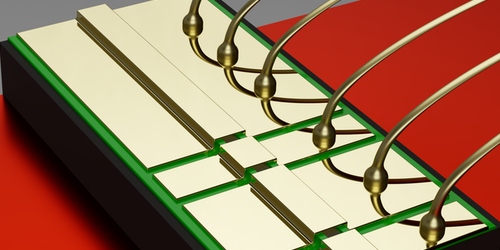Two Lasers in One
A frequency-comb laser simultaneously emits many wavelengths of light, with each being equidistant from the next in frequency space. Some emit an amplitude-modulated (AM) beam, which appears as pulsed rather than continuous light, others emit a frequency-modulated (FM) beam, where the light has a steady intensity but a modulated frequency. Because these two types of comb produce different outputs, researchers thought that their spectra arose from independent physical mechanisms. Now, in a new experiment, Benedikt Schwarz of the Technical University of Vienna and colleagues demonstrate a quantum-dot laser that produces both types of frequency combs.
The researchers produce the AM and FM frequency combs using a near-infrared laser, where the light comes from photons emitted by excited quantum dots. When they apply a negative voltage to the dots, they find that they can excite the dots more quickly, and the laser produces an AM beam. Without the negative voltage, the laser emits a FM beam.
To explain the finding, the team likens the AM and FM laser outputs to the motion of a group of metronomes. Metronomes are known to swing in either synchrony or antisynchrony when placed on a tabletop, the motion type depending on the table’s damping. In the comb, each frequency couples to its neighbor to produce a so-called “beat note” whose frequency is equal to the spacing between the comb’s teeth. If all contributions to the beat note have the same phase—move in synchrony—the beat note intensity is maximized, and the result is an AM “pulsed” output. However, if the laser’s gain medium is sufficiently damped, the phases antialign, and the beat note vanishes, leading to a FM output. Their theoretical work suggests that many semiconductor lasers can sustain both settings.
This research is published in Physical Review Letters.
–Sophia Chen
Sophia Chen is a freelance science writer based in Tucson, Arizona.





